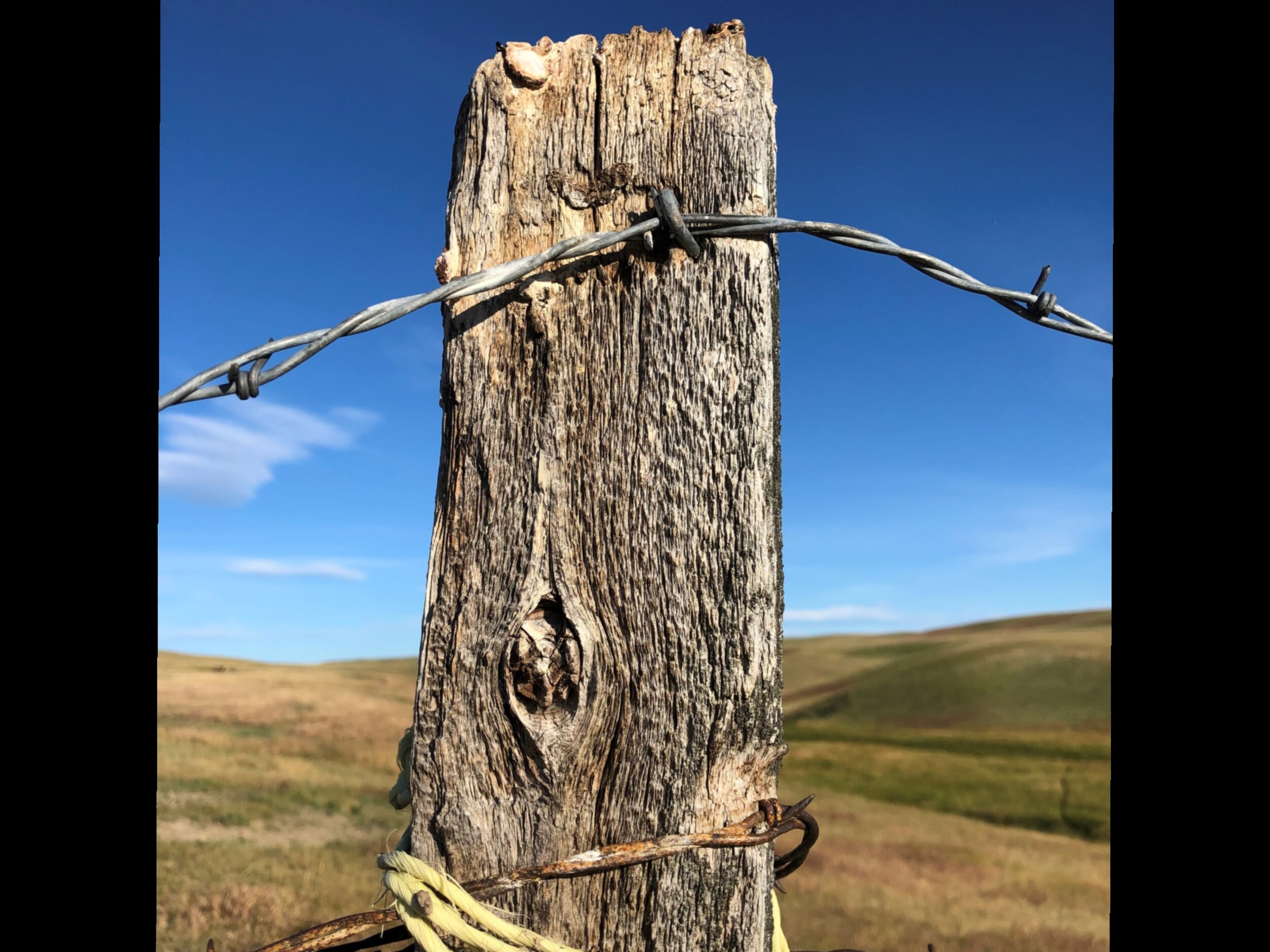Fence Posts
Many of the posts on my ranch are metal t-posts. They are practical and quick to pound.
Evidence of an unforgiving hydraulic wooden post pounder on my left index finger explains my most compelling reason for t-posts scattered along my fences.
Other posts are green treated posts, either pounded in by my husband, Steve, years ago or by the neighbors.
The most fascinating posts are cedar and ancient.
Nothing holds a story like a fencepost.
A homesteader’s effort to civilize this wild land.
Neighbors attempting to cooperate and still protect what is theirs.
Family pride.
All of that soaked into weathered gray carbon atoms standing tall against relentless wind, penetrating snow and the sun’s oven.
As the grass grows taller, the cattle push on those posts and wire.
Well, yearling cattle push on posts and wire no matter how tall the grass is, as all teenagers push boundaries.
Posts snapped and wire mashed by snowdrifts are in predictable locations –every roadside fence within reach of snowplow spray and every coulee calls for repair. It’s easy to access the road holes, not so much in the coulees.
My cattle ranching neighbors were replacing posts as I drove out to repair my fence.
We chatted for a minute before one asked if I need to borrow some wire. He had noticed that I use yellow twine on some of our shared fence so I must be out of wire.
I use yellow twine to tie the woven wire to the top barbed wire. I told him I use that twine as a visual barrier for the sheep.
“Sheep can see yellow to they are less likely to attempt escape right there,” I smiled.
My neighbor’s mouth was still hanging open as I pulled away.
My mom came to visit while I still needed to fix a few spots where snowdrifts had mashed the fence at my new summer pasture.
Unfortunately, the downed fence was in a coulee across the creek, with no way to reach it with my truck.
At 79, my mom is a good sport.
She took off her shoes and socks, wading the creek with fencing pliers and staples in hand.
I carried the t-posts and pounder through the thigh-high water that carried the dog 25 yards downstream.
We forged our way through the tall snowberries and enjoyed the sounds of rushing water and vivid colors of blooming wildflowers as we patched the fence.
Then shoes and socks came off again and we waded back to the truck side.
As she pulled her socks over her wet, muddy bare feet, my mom said “Lisa, I’m not going to help you fix fence on that side of the creek again.”
Whoa! That fence helped define a different type of boundary, too.
I took most of the cow herd to the new summer pasture, but I wanted to keep a closer eye on the yearlings and a few late cow-calf pairs. They stayed Up West.
Which meant I better check that fence.
I ran out of metal posts, staples and water before I finished checking.
The next day, I was relieved to spot the neighbor’s bull in my pasture. For once, my cattle had not gone visiting on his land.
But my yearling heifers don’t need to associate with older bulls, just as teenage girls don’t need to associate with older men.
My gracious neighbor took the bull home. I pounded more staples and clipped wire to more posts.
As the deer flies bit bare skin and the beating sun dripped sweat into my eyes, I admired the grain of the cedar posts, thought about the people who buried them and realized that now I am a part of their story, too.
I smiled.
